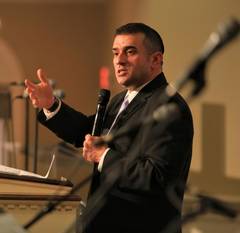- About Us
- Learning
- Resources
- Get Involved
- Membership
- Jobs
Shavuot 2020
05/27/2020 02:31:57 PM
Rabbi Brent Spodek
| Author | |
| Date Added | |
| Automatically create summary | |
| Summary |
 |
| Julius Schnorr von Carolsfeld, Ruth in the Field with Boaz |
Tomorrow evening, May 28 will mark the beginning of Shavuot, possibly the least known of the major Jewish holidays.
We’ll be celebrating it here at BHA with mincha, including yizkor, on Saturday at 4 PM, followed by a cook along with Jennifer Clair exploring Moroccan Tagine with Apricots and Chickpeas at 5:00 PM and finally havdalah to close out the holiday at 7:00 PM.
One custom of Shavuot is to stay up all night learning in anticipation of receiving the Torah (more on that below). One of the silver linings of our current situation is that tremendous learning is available on-line from around the world. Assuming I can stay awake, I’m hoping to take part in the Tikkun at the JCC in Manhattan with Professor Danny Matt teaching Zohar and Idan Raichel, one of my favorite musicians, singing and telling stories.
If you want to get prepared though, here’s what Shavuot is about:
On the most basic level, Shavuot is a holiday which celebrates the giving of the Torah at Mount Sinai as well as the biblical heroine Ruth, a poor woman of the despised Moabite nation who is nevertheless supported by Boaz, an Israelite. Ritually, its defining characteristic is a late night study session, known as a Tikkun Leil Shavuot, while a secondary and wonderful tradition is eating dairy products, specifically cheesecake. Finally, Shavuot is also tied to Passover through a practice known as the Counting of the Omer, which marks every one of the 49 days between Passover and Shavuot.
At a deeper level the study of Torah on Shavuot is about how we “receive Torah” in our time and in our place. There is one thread in the Jewish tradition which demands that we constantly confront the needs of something and someone other than ourselves; at the same time though, there is an immediacy by which the Torah is constantly reshaped by our own understandings of it. Shavuot demands that we not accept Torah passively, but actively bring our full selves to its transmission. As far as the cheesecake, well, the origins of the practice are shrouded in history but my favorite explanation is that once the Israelites received the Torah with its laws regarding the preparation of meat they knew they could not eat their previously prepared meat, which they now knew to be “un-kosher.” So instead, they ate dairy food, the preparation of which is less strictly governed by Jewish law.
Finally, on a personal level, Shavuot brings together the story of Sinai and story of Ruth, which represent two aspects of Judaism which are occasionally and unfortunately seen as being in tension – Love and Justice. Justice, as represented by Sinai, demands reliable systems for adjudicating conflict and ensuring that basic societal needs are met. Without justice, the weak are always at the mercy of the powerful. But Love, as represented by Ruth, knows that laws and systems are never enough. Ruth was a Moabite, a descendant of one of biblical Israel’s worst enemies. By law, she should have been shunned, but she wasn’t. She was embraced by Boaz in a way that recognized the power of the law and its limitations and the tradition tells that the Messiah will ultimately emerge from their union. For us perhaps, the challenge is maintaining love and justice at all times in the proper proportions.
With blessings for a revelatory Shavuot,
Rabbi Brent
Mon, November 3 2025
12 Cheshvan 5786
RABBI BRENT SPODEK

Join Our Mailing List
Privacy Settings | Privacy Policy | Member Terms
©2025 All rights reserved. Find out more about ShulCloud


